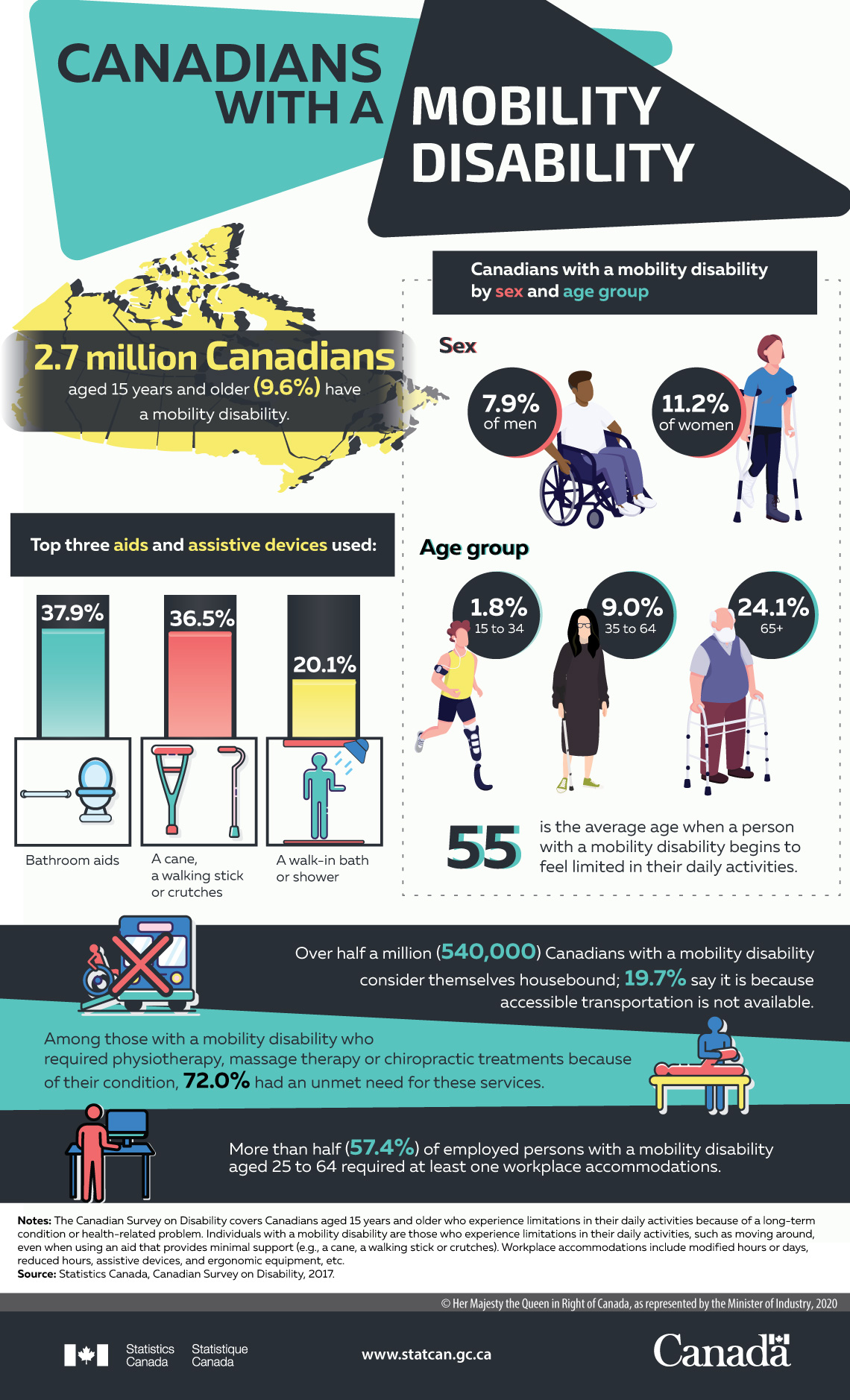Canadians with a mobility disability
Archived Content
Information identified as archived is provided for reference, research or recordkeeping purposes. It is not subject to the Government of Canada Web Standards and has not been altered or updated since it was archived. Please "contact us" to request a format other than those available.

Description: Canadians with a mobility disability
2.7 million Canadians aged 15 years and older (9.6%) have a mobility disability.
Canadians with a mobility disability by sex and age group:
- Sex
- 7.9% of men
- 11.2% of women
- Age group
- 1.8%: 15 to 34
- 9.0%: 35 to 64
- 24.1%: 65+
55 is the average age when a person with a mobility disability begins to feel limited in their daily activities.
Top three aids and assistive devices used:
- Bathroom aids (37.9%)
- A cane, a walking stick or crutches (36.5%)
- A walk-in bath or shower (20.1%)
Over half a million (540,000) Canadians with a mobility disability consider themselves housebound; 19.7% say it is because accessible transportation is not available.
Among those with a mobility disability who required physiotherapy, massage therapy or chiropractic treatments because of their condition, 72.0% had an unmet need for these services.
More than half (57.4%) of employed persons with a mobility disability aged 25 to 64 required at least one workplace accommodations.
Notes:
The Canadian Survey on Disability covers Canadians aged 15 years and older who experience limitations in their daily activities because of a long-term condition or health-related problem. Individuals with a mobility disability are those who experience limitations in their daily activities, such as moving around, even when using an aid that provides minimal support (e.g., a cane, a walking stick or crutches). Workplace accommodations include modified hours or days, reduced hours, assistive devices, and ergonomic equipment, etc.
Source: Statistics Canada, Canadian Survey on Disability, 2017.
- Date modified:
